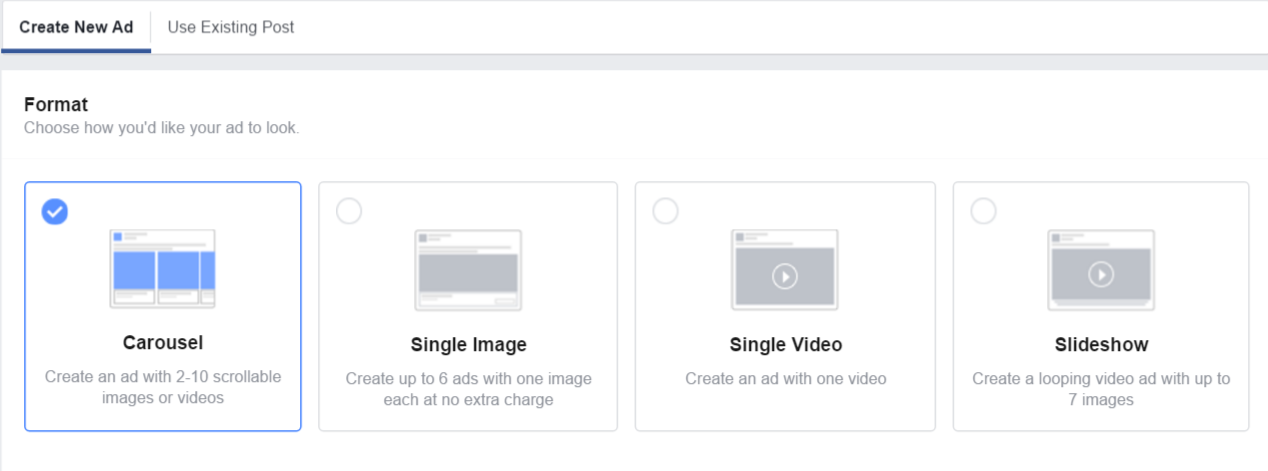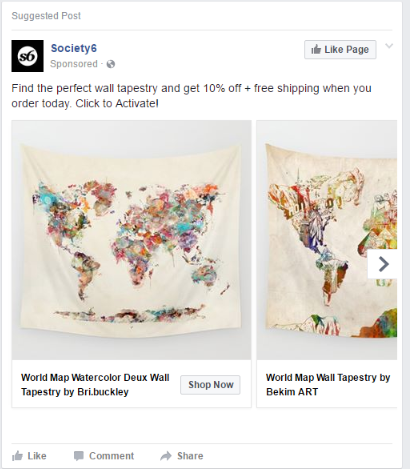How Retailers Can Reel in Repeat Customers on Facebook


We’ve covered retargeting ads on Facebook, and how they can help you turn browsers into buyers.
But what about those customers who make a single purchase and never (or rarely) return? How can you turn those once-a-year buyers into repeat customers?
We sat down with Sarah Rogers, Senior Social Strategist at CPC Strategy, to discuss the ways retailers can turn first-time buyers into VIPs on Facebook.
Author’s Note: If you’re looking for a standard guide to setting up a Facebook Pixel to track your customers and target ads, check out our blog post.
This is the first thing you should think about as you attempt to retarget those first-time buyers: determine what an ideal repeat customer—a.k.a., “VIP” looks like.
Yes, we’d all love to have loyal customers who purchased our products every week. Or every day (hello, coffeeshops).
 The truth is, “If you’re selling dog food, you’ll likely have a faster buying cycle than someone selling yoga pants,” points out Rogers.
The truth is, “If you’re selling dog food, you’ll likely have a faster buying cycle than someone selling yoga pants,” points out Rogers.
In order to figure out what your VIPs look like, you should figure out your “customer latency” period, or the average amount of time it takes your customers to purchase your products.
Ask these questions for all your inventory categories.
Once you have the ideal repeat customer in mind, you can determine what type of ad to use, and how frequently you want to target those VIPs.
Then, you can choose to create an audience based on those who haven’t been back after your preferred amount of time:
![]()
What happens if the Facebook cookie is blocked on the browser that fires your pixel?
This is a little on the dev side, but you can fill in the gaps your preexisting customers may fall through by using something called “Advanced Matching.” According to Facebook, this nifty trick resulted in a “10% increase in attributed conversions and 20% increase in reach of retargeting campaigns [for their clients].”
Advertisers can include unique customer identifiers such as email and phone number as parameters in the pixel. Check out the still shot below for an example of changes:
![]()
Then, according to Facebook, this will result in “pixel events [matching] with Facebook users when the Facebook cookie is not present on the browser that fires the pixel.”
“The Facebook cookies may usually be present, but it’s a good idea to have this as a backup,” says Rogers.
Ever since emerging on the scene in February 2015, Dynamic Product Ads—now called simply “Dynamic Ads”—have proven to be some of the most effective ways to reach customers with your product catalog.

First, they’re pretty easy to set up. All you need is your product feed and creative assets, and the Facebook Retargeting Pixel set up on your site.
Secondly, they’re actually very effective. They show up on mobile, desktop, and tablets across these Facebook ad spaces:
There are two main ways Dynamic Ads can be used to turn those first-time buyers into repeat customers, especially if some of your products are seasonal or infrequently purchased: Cross Selling and Upselling.

Cross-selling targeting options on Facebook were announced in August 2015, and they’ve been a welcome addition for retail advertisers.
Let’s say someone purchased those yoga pants from you. It’s probably too soon to target them with another ad for yoga pants. How do you get them to buy again?
“Hit them with another ad that has a targeted message with “cross-selling” opportunities, such as a yoga mat,” says Rogers.
On Facebook, it’s called cross-selling. Here’s how Facebook puts it:
[Cross-selling] is especially useful for increasing the lifetime value of a customer as they may be out of the purse market immediately after making a purchase, but could still be interested in shoes from the same business.
You aren’t limited to one product, either. You can create a carousel with different product sets—say, jeans, shirts, hats—and serve them up with little fuss.
Here’s an example of a carousel ad by Society 6 that showed up in one of CPC team member’s feeds. You can’t tell what the targeting metric is, but we have a hunch it was targeting past customers who had made a similar purchase:

Let’s say someone just bought a pair of socks from your site, and you’d like them to start making larger purchases if possible (who wouldn’t?)
“Upselling is more about selling a full outfit,” says Rogers. The “Upsell” feature on Facebook does just that, by showing your viewers a higher-value item after they’ve made an initial purchase. After all, they’re going to need some boots and pants and a hat to go with those socks.
Try these tactics for turning one-time customers into repeat buyers, and you should see a higher return on your Facebook ads investment through Q4 and beyond.
Have questions about this post? Email [email protected]
Have questions about this post? Email [email protected]
